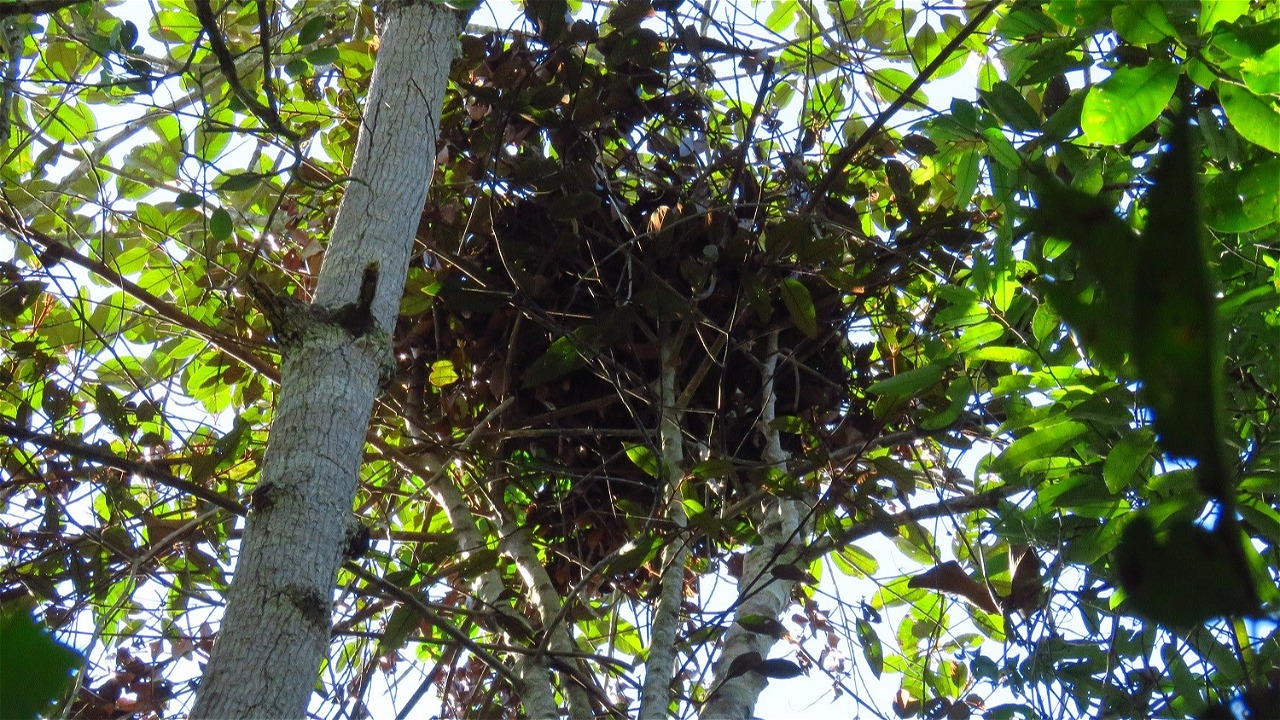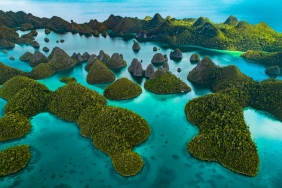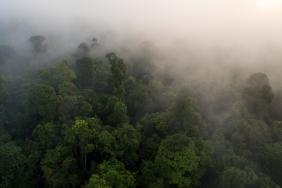BORNEAN ORANGUTAN SURVEY IN THE FOREST CORRIDOR AREA OF TN SEBANGAU-TN BUKIT BAKA BUKIT RAYA
By: (Ari Meididit, Taufik M Mulyana, Khaleb Yordan, M Ismail Adha, Agusti Randi, Abraham, Rantawan, and Ajim Ariadi)
The total orangutan population in Sebangau National Park based on field surveys by WWF-Indonesia Central Kalimantan office is 5,826 individuals (WWF Central Kalimantan, 2015). Based on numbers, this is the largest population in conservation areas in Central Kalimantan. Although based on data from the Population and Habitat Viability Assessment of Orangutans (2016) using Vortex analysis, this population will remain stable within the next 100 years, but there needs to be an effort to connect this habitat with other habitats so that the sustainability of this population is maintained.
Efforts can be made to connect the habitat of Sebangau National Park, a peat swamp forest type, with Bukit Baka-Bukit Raya National Park (BBBR National Park), a highland forest type. Between the two conservation areas, there are approximately ± 115,000 ha of forest areas with forest types of Peat Swamp Forest, Kerangan Forest, and Lowland Forest. This area is also included in three Forest Management Units (FMU) units III, XV and XVII.
Based on the Regulation of the Director General of KSDAE Number P.8 of 2016 concerning guidelines for determining wildlife corridors as essential ecosystems, to determine the area to become an animal or wildlife corridor, various preliminary information is needed, both from the ecological and socio-economic aspects of the community in the area that is considered to have potential as a corridor.
Therefore, a survey to determine the species diversity and distribution of fauna in the Sebangau National Park-TNBBBR forest area was carried out in the period December 2017 - June 2018. The survey was also conducted to determine the structure and composition of endemic plant vegetation in the corridor. The survey involved a team from WWF-Indonesia, mammal experts, bird experts, vegetation experts, flying insect experts, MAPALA SYLVA, and communities around the area.
One of the components of the survey was the Bornean Orangutan survey, which included determining nest positions and nest classes.
Nest Positioning and Nest Class Determination
Data was collected by tracing the transects using the distance program and recording several criteria to determine the density of orangutan, ficus, and fruit trail populations. These criteria included nest distance perpendicular to the observation path (ppd), nest position, nest class, etc. Nest position can be divided into 5, namely position 1, position 2, position 3, position 4, and position 0.
Furthermore, orangutan nest classes are divided into 4 classes, namely classes A, B, C, and D. Class A nests are new nests and are characterized by the color of the leaves that are still green, class B nests are characterized by the presence of leaves that have begun to wither and begin to turn yellow, class C nests are old nests characterized by dry and brown leaves but the nest is still sturdy and solid, class D nests are almost lost, namely the class of nests characterized by few twigs and the shape of the nest is almost gone.
This survey was conducted along 22 transects. The presence of orangutans (Pongo pygmaeus) could be detected in 21 transects through indirect encounters, i.e. nests and feeding scars as well as direct encounters during the process of traveling to the target transect locations. According to IUCN (2018), orangutans (Pongo pygmaeus wurmbii) are considered a critically endangered species. Orangutans are categorized as Appendix 1.
Nest Density and Orangutan Population
The nest data analyzed were nests located within the observation transects. Based on survey results with a total transect length of 21,740 meters, the density of orangutan nests in the Sebangau NP-TNBBBR corridor was 228 nests/km². The density of orangutans per square kilometer is 0.59 individuals (proportion of nest-making orangutans = 0.89; number of nests made by one orangutan per day on average = 1.16; length of time from nest creation to decay per day = 365). During the observation, individual orangutans were also directly encountered.
The total estimated population of orangutans in the Sebangau NP-TNBBBR corridor after calculating the land cover that is still forest is 700 individuals from 1,168.2 km² of forest cover. According to experts, this result is good enough for orangutans to survive for the next 100 years.
During the observation, 177 orangutan nests were found within the observation transect, with 9 class 1 nests, 10 class 2 nests, 63 class 3 nests, and 95 class 4 nests.
In addition to orangutans, 253 species of plants, 106 species of birds, 17 species of mammals-primates, 23 species of dragonflies, and 21 species of butterflies were also found during the survey conducted in forest areas around 3 districts, namely Katingan, Palangka Raya, and Gunung Mas, Central Kalimantan. 80 of these plant species are protected, threatened, and endemic to Kalimantan Island. This area is easily accessible from many directions, so the threats to this area are even greater.
From the survey results, the team made several recommendations for the management of the Sebangau NP-BBRN Corridor. The first recommendation is sustainable utilization without ignoring the values of protection, preservation, and the value of local cultural identity. Intensive security of the area and forest is needed because it holds a very diverse diversity of plants typical of Kalimantan and many of them are protected, threatened and endemic species for Kalimantan Island. Strict law enforcement is needed against violations found around the Sebangau National Park-BBR National Forest Corridor. In addition, it is necessary to propose this area as an Essential Ecosystem Area so that its sustainability is maintained.





